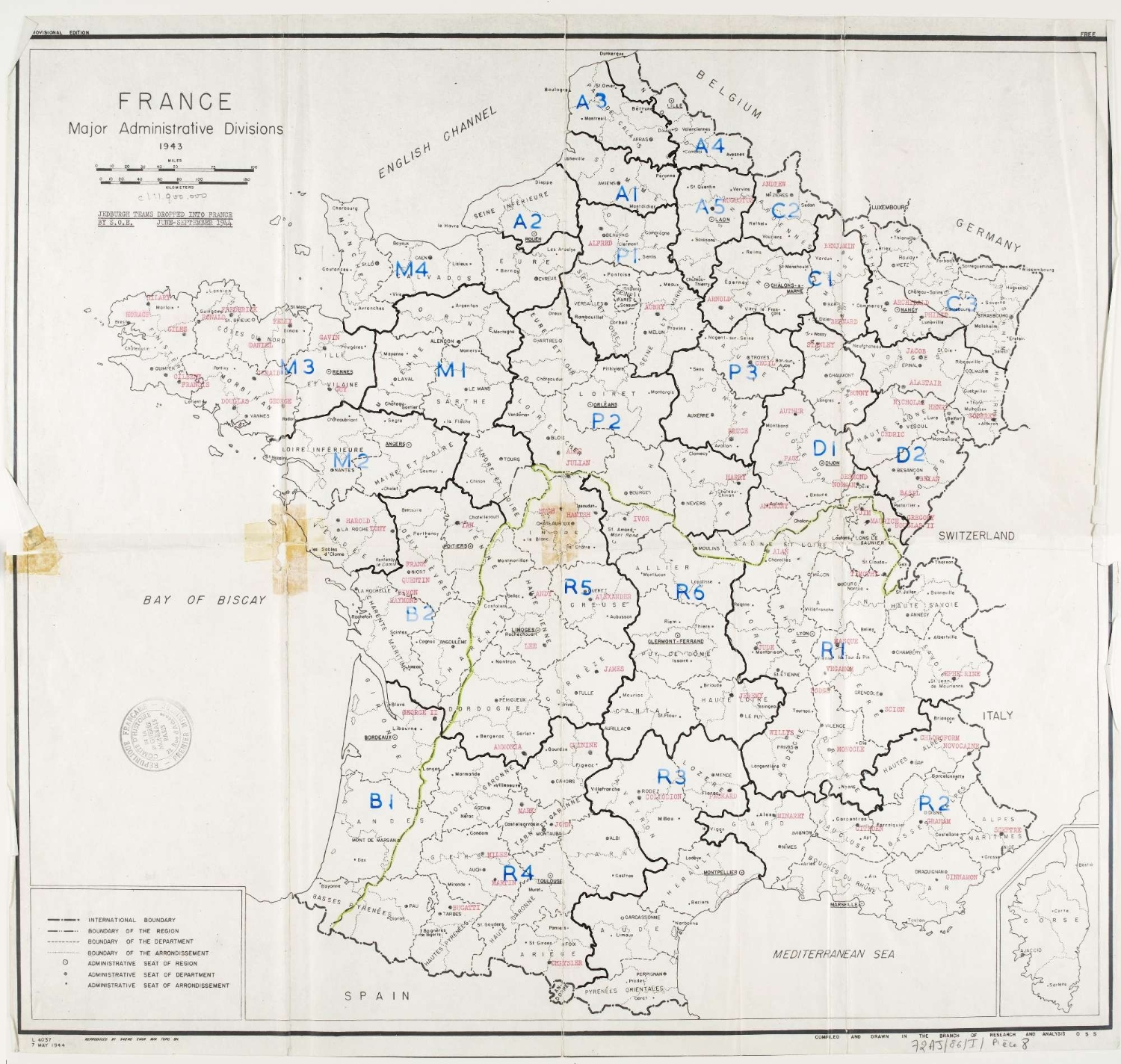The operations of the eleven Jedburgh teams in northeastern France demonstrate a number of institutional failings. It would be altogether too easy to focus one’s attention on radios that did not function (Usual with British Material), teams inserted too late, or army staffs without the ability to directly contact the special operations forces (SOF) teams on the paths of their advance. One major problem was that the SOE and the OSS were new organizations attempting to conduct special operations with the new means of radio and aircraft. It should not be surprising that new organizations breaking new ground would encounter unforeseen difficulties.
 The second major problem was with the officer corps of the Allied armies, particularly at the senior levels, which remained unaware of the capabilities of the SOF teams beyond post linkup tactical assistance. Most US Army division, corps, army, and army group headquarters turned in favorable reports on both the French Resistance and the Special Force Detachments for the summer campaign of 1944. US Army field commanders were particularly enthusiastic regarding the help provided by French guides who accompanied American units, briefed them on local conditions, interpreted for them, and led them around German positions. In short, US commanders appreciated the tactical benefits provided by the French Resistance. There is a scant reference, however, in the Special Force Detachment summaries to Jedburgh teams or other special operations teams.
The second major problem was with the officer corps of the Allied armies, particularly at the senior levels, which remained unaware of the capabilities of the SOF teams beyond post linkup tactical assistance. Most US Army division, corps, army, and army group headquarters turned in favorable reports on both the French Resistance and the Special Force Detachments for the summer campaign of 1944. US Army field commanders were particularly enthusiastic regarding the help provided by French guides who accompanied American units, briefed them on local conditions, interpreted for them, and led them around German positions. In short, US commanders appreciated the tactical benefits provided by the French Resistance. There is a scant reference, however, in the Special Force Detachment summaries to Jedburgh teams or other special operations teams.
The Special Force Detachments themselves frequently remarked that army headquarters remained uncertain where they would be operating in the future, which naturally retarded planning. On July 29 1944, the 1-A’s 10th Special Force Detachment planned ahead only as far as Chartres and Dreux, and they were still not examining the area north of the Seine on August 2. One of the problems was that the American staff officers and commanders had been schooled to not extend their boundary lines beyond the front, a practice many still maintained in August 1944. On August 24, the detachment observed: the army tactical plan is still confused. Col Colby at this moment is conferring at the 12-AG with Col Jackson and it is expected that he will bring back to this Headquarter future tactical plans of the American Armies on the continent.
 Besides a reluctance to plan ahead and inform subordinate headquarters of those plans, it would seem that the Special Force Detachments did not always receive timely and accurate reports from the SFHQ regarding resistance activities, as the following summary reveals: resistance activities at V Corps: on arriving at this Corps on September 7, we found them in the midst of the French Ardennes. They had just picked up the Citronelle Mission and Jedburgh Team Andrew. These missions proved very disappointing, as they had been quite inactive. From their reports to London which had been transmitted to us in the field, it had never appeared that resistance was very well organized in the Ardennes.
Besides a reluctance to plan ahead and inform subordinate headquarters of those plans, it would seem that the Special Force Detachments did not always receive timely and accurate reports from the SFHQ regarding resistance activities, as the following summary reveals: resistance activities at V Corps: on arriving at this Corps on September 7, we found them in the midst of the French Ardennes. They had just picked up the Citronelle Mission and Jedburgh Team Andrew. These missions proved very disappointing, as they had been quite inactive. From their reports to London which had been transmitted to us in the field, it had never appeared that resistance was very well organized in the Ardennes.
This was found to be the opposite of the truth, and it seems that it was the Citronelle Mission that was not well organized. The local FFI had been doing a marvelous job for the V Corps throughout the entire area. The G-3 assigned, through Maj Broussard, areas of responsibility to the FFI. It was very interesting to see that on the G-3 operations map the boundaries laid out for the FFI, as well as for the regular regiments and battalions, Maj Broussard had one group of almost 500 armed men whom he dispatched here and there to clean up German pockets. Where necessary the FFI groups were augmented by light tanks and on several occasions with AAA units. It is interesting to note that the AA units in this Corps were used mostly to clean up Germans and not in their normal role.
 This summary is revealing in several aspects. It tells us that the Special Force Detachment was unaware of the difficulties in operating agents and networks in eastern France and Belgium, of the previous troubles the SOE had encountered there, and of the very difficult time, the [Citronelle] Mission (and Team Andrew) had in the Ardennes. The above-quoted summary also reveals that in spite of the difficulties, many French and Belgians came out to help the Allied cause once there was a realistic chance to participate without committing suicide. One might disparage such late election, but the volunteers provided valuable assistance that SHAEF’s ground commanders appreciated. Furthermore, eastern France and Belgium proved one of the more difficult areas in which to operate, and premature revolts, as has been demonstrated, often led to catastrophe.
This summary is revealing in several aspects. It tells us that the Special Force Detachment was unaware of the difficulties in operating agents and networks in eastern France and Belgium, of the previous troubles the SOE had encountered there, and of the very difficult time, the [Citronelle] Mission (and Team Andrew) had in the Ardennes. The above-quoted summary also reveals that in spite of the difficulties, many French and Belgians came out to help the Allied cause once there was a realistic chance to participate without committing suicide. One might disparage such late election, but the volunteers provided valuable assistance that SHAEF’s ground commanders appreciated. Furthermore, eastern France and Belgium proved one of the more difficult areas in which to operate, and premature revolts, as has been demonstrated, often led to catastrophe.
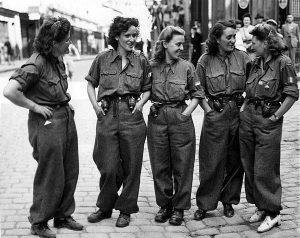 Finally, the detachment’s summary indicates certain preconceived notions about doing business, for example, a tendency to equate success with quantification: (1) the number of armed FFI fielded, (2) the number of POWs taken, or (3) the number of sabotage actions. Those totals were usually associated with tactical missions. Operational significance, possibilities for further exploitation, or lessons learned tended to be deemphasized. It would appear, therefore, that the army headquarters were not the only ones thinking shallow and not deep.
Finally, the detachment’s summary indicates certain preconceived notions about doing business, for example, a tendency to equate success with quantification: (1) the number of armed FFI fielded, (2) the number of POWs taken, or (3) the number of sabotage actions. Those totals were usually associated with tactical missions. Operational significance, possibilities for further exploitation, or lessons learned tended to be deemphasized. It would appear, therefore, that the army headquarters were not the only ones thinking shallow and not deep.
The 11th Special Force Detachment (3-A) used FFI troops to a far greater extent than the 1-A. The 3-A used large bodies of resistance troops to assist in the reduction of German garrisons of the Breton seaports and subsequently used some 15.000 FFI troops to guard the Loire River line as the 3-A swept east toward the German border. Nevertheless, there are relatively few references in the 11th Special Force Detachment’s summaries to Jedburgh teams, and those merely reported the linkup of ground units with the Jedburgh teams. The detachment observed the date of Sept 4 when the FFI captured the Moselle bridge at Charmes but failed to mention the participation of Jedburgh teams.
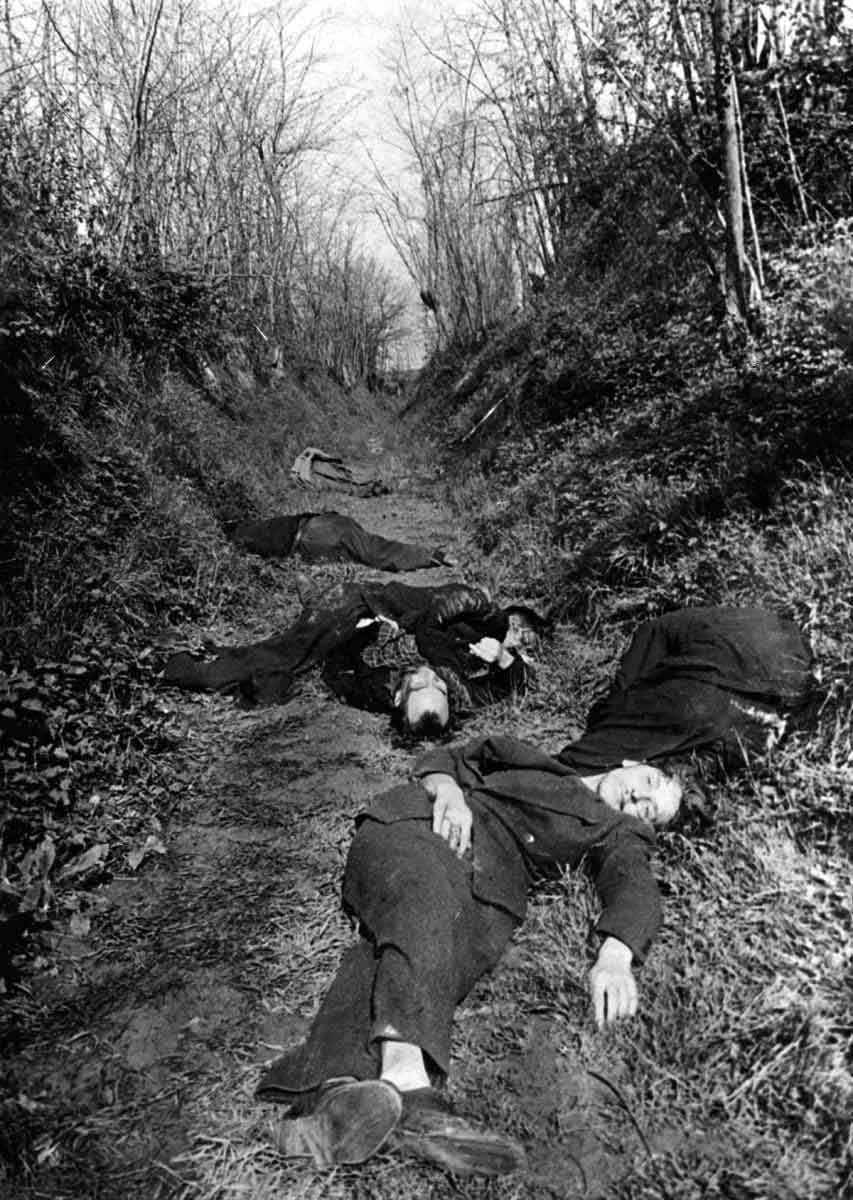 (Image : Summary execution was really the best that Resistance’s Members as well as SAS, OSS, SOE could expect if captured. Many endured indescribable torture at the hands of the Gestapo. A German picture of Resistance fighters who were executed near Lantilly in May 1944)
(Image : Summary execution was really the best that Resistance’s Members as well as SAS, OSS, SOE could expect if captured. Many endured indescribable torture at the hands of the Gestapo. A German picture of Resistance fighters who were executed near Lantilly in May 1944)
As demonstrated in the reports of the eleven Jedburgh teams dropped in front of the 12-AG, most Jedburghs concluded that they had been inserted far too late. That sentiment was shared by many other Jedburgh teams regarding their own operations. Such spirit and aggressiveness speaks well for those soldiers but raises a number of awkward questions. We have observed how inherently dangerous such operations were. What would the teams have accomplished had they in fact been inserted a month or two earlier ?
In all probability, they would have recruited, armed, and trained more FFI volunteers. Had that been done, it would have made it all the more difficult to restrain the FFI from premature revolt and also would have given Axis security forces greater opportunity to infiltrate the resistance. The teams would also have sent additional radio messages to London, which would have given the Germans a greater opportunity to locate the radios with direction-finding sets. There were many areas in occupied France where it was very hazardous for individual agents to operate. To have inserted three-man, uniformed teams into such areas probably would have been risking too much. One of the major problems with the SOF operations in 1944 was clearly communications. Jedburgh team reports indicate that radios packaged in 1944 had a tendency to break during parachute drops. During training exercises early in 1944, a number of problems became evident, but by August, those problems had obviously not been resolved.
 Jedburgh team reports also demonstrated the feeling that their radio messages were not being listened to or acted upon. It would appear that in August 1944, the SFHQ message centers were receiving so much traffic that it became impossible to analyze, act upon, and disseminate information. The difficulties in the field were best summarized in the report of the Special Force Detachment officer operating with the 4-AD in Brittany, who on Aug 12 observed: in my estimation and in the Division’s the FFI did good work. It was a great sense of security to see armed friendly civilians all around us. They served an excellent purpose in that they helped to guard our supply lines and that they rounded up and cleared the area of German stragglers. However, due to lack of communication between myself and this HQs, and myself and field, Resistance could not be controlled to the maximum effectiveness for use to the Division. Due to a lack of concrete orders, both concise and timely, from London, greater action on the part of Resistance in front of the Division was lost. All told, I would estimate that Resistance had been used at 50 percent efficiency in the Brittany campaign.
Jedburgh team reports also demonstrated the feeling that their radio messages were not being listened to or acted upon. It would appear that in August 1944, the SFHQ message centers were receiving so much traffic that it became impossible to analyze, act upon, and disseminate information. The difficulties in the field were best summarized in the report of the Special Force Detachment officer operating with the 4-AD in Brittany, who on Aug 12 observed: in my estimation and in the Division’s the FFI did good work. It was a great sense of security to see armed friendly civilians all around us. They served an excellent purpose in that they helped to guard our supply lines and that they rounded up and cleared the area of German stragglers. However, due to lack of communication between myself and this HQs, and myself and field, Resistance could not be controlled to the maximum effectiveness for use to the Division. Due to a lack of concrete orders, both concise and timely, from London, greater action on the part of Resistance in front of the Division was lost. All told, I would estimate that Resistance had been used at 50 percent efficiency in the Brittany campaign.
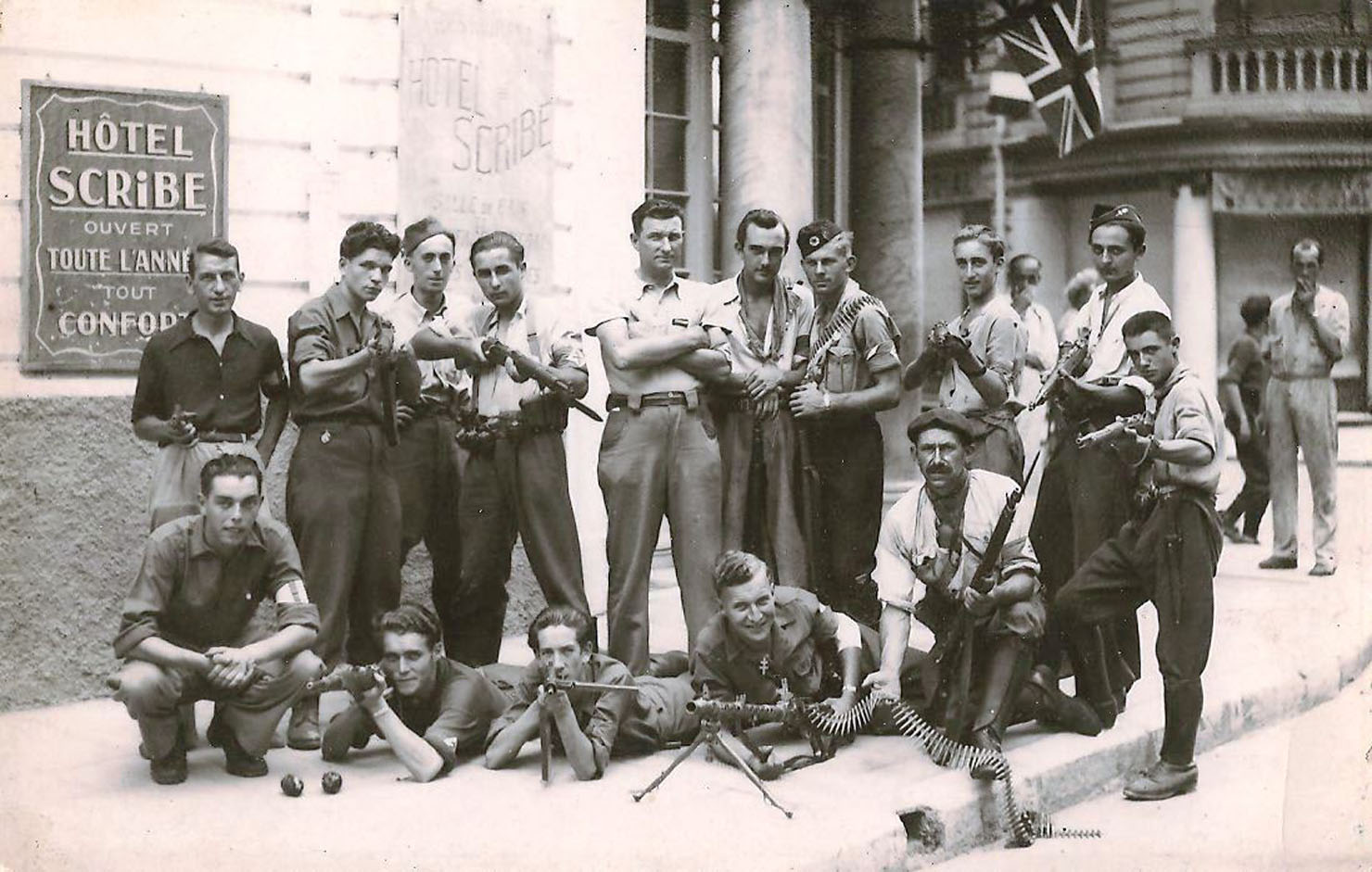 In the area of communications, there were obvious problems with the radio sets. Furthermore, in August 1944, the SFHQ receiving stations received too many messages to effectively evaluate and act upon. And finally, a real problem existed in the inability of the ground force HQs to effectively communicate tactically with the SOF groups.
In the area of communications, there were obvious problems with the radio sets. Furthermore, in August 1944, the SFHQ receiving stations received too many messages to effectively evaluate and act upon. And finally, a real problem existed in the inability of the ground force HQs to effectively communicate tactically with the SOF groups.
(Doc Snafu: It is hard to believe that the country who pierced the German Enigma coding system was not able to manufacture reliable radio communication sets and/or Aerial Delivery Containers. They didn’t correct this problem while the Jedburghs were in their training period and reported the issue. They didn’t either correct the problem while the Jedburghs were being sent to France for operations and, that’s really the best, they didn’t for Operation Market Garden which resulted for nearly 80% of the British Paratroopers of the 1st Airborne Division being left in Arnheim without any functioning communication means, being encircled then captured by the troops of SS- Wilhelm Bittrich’s 2nd Panzer Corps)
 Beginning in 1941, the British SOE (Special Operations Executive) and the American OSS (Office of Strategic Services) intelligence agencies both parachuted agents into occupied Europe to gather intelligence and organize resistance forces. Communication networks were critical for these agents, but so was the need for secrecy. One solution was the suitcase radio. Compact and capable of being adapted to many power supplies, the whole radio fit neatly into a small suitcase. The suitcase was dropped to agents by parachute in an airtight container.
Beginning in 1941, the British SOE (Special Operations Executive) and the American OSS (Office of Strategic Services) intelligence agencies both parachuted agents into occupied Europe to gather intelligence and organize resistance forces. Communication networks were critical for these agents, but so was the need for secrecy. One solution was the suitcase radio. Compact and capable of being adapted to many power supplies, the whole radio fit neatly into a small suitcase. The suitcase was dropped to agents by parachute in an airtight container.
The British Type 3 Mark II suitcase radio set was the most common set in use by clandestine operatives in Europe between 1943 and 1945. The set was designed to send and receive messages by Morse code rather than voice transmission. The radio had a range of over 500 miles. It was the smallest transceiver (transmitter and receiver combined) during World War II.
 One problem not unique to operations in the summer of 1944 was the dilemma of the SOF organization.
One problem not unique to operations in the summer of 1944 was the dilemma of the SOF organization.
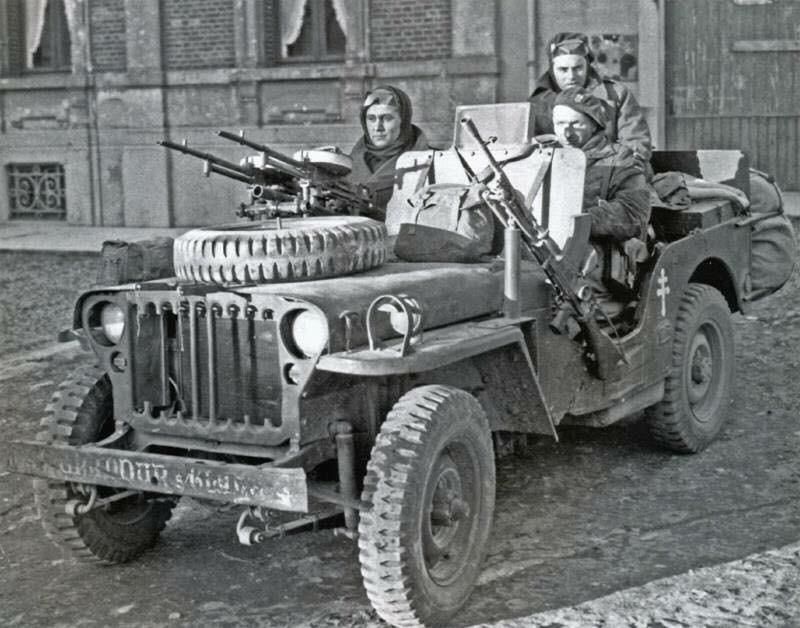 As a number of Jedburgh team reports indicate, when teams requested reinforcement by one SAS party, they usually did not receive it. On the other hand, there were numerous instances of Jedburgh teams encountering unannounced SAS parties. In most instances, when that occurred, the two groups simply went their separate ways. These ‘private wars’ of the SAS often hindered the resistance, drawing Axis retaliation against the resistance and local villagers, usually after the SAS party had already ex-filtrated. One thing is certain, however, and that is that the creation of separate and competing organizations, such as the SAS and the SFHQ, leads to overlapping functions and creates the opportunity for unnecessary friction. At army and army group headquarters, staff cells did on occasion incorporate the SOF into their future plans. Before the Operation Cobra breakout from Normandy, SHAEF developed a plan using a large portion of the SAS brigade to cooperate with ground units in capturing the Bay of Quiberon in Brittany. That, like many other plans, was soon outdistanced by events.
As a number of Jedburgh team reports indicate, when teams requested reinforcement by one SAS party, they usually did not receive it. On the other hand, there were numerous instances of Jedburgh teams encountering unannounced SAS parties. In most instances, when that occurred, the two groups simply went their separate ways. These ‘private wars’ of the SAS often hindered the resistance, drawing Axis retaliation against the resistance and local villagers, usually after the SAS party had already ex-filtrated. One thing is certain, however, and that is that the creation of separate and competing organizations, such as the SAS and the SFHQ, leads to overlapping functions and creates the opportunity for unnecessary friction. At army and army group headquarters, staff cells did on occasion incorporate the SOF into their future plans. Before the Operation Cobra breakout from Normandy, SHAEF developed a plan using a large portion of the SAS brigade to cooperate with ground units in capturing the Bay of Quiberon in Brittany. That, like many other plans, was soon outdistanced by events.
When Montgomery’s 21-AG undertook the ill-fated Operation Market-Garden in September, six Jedburgh teams deployed to support the operation. In the Jedburgh team operations we have looked at, however, there was only one instance of an army or army group request for direct operational support on August 30, request to seize and hold the Somme River bridges and those near Amiens for four days. Team Augustus was wiped out that evening, and Team Alfred was too far away and in too threatened a position to undertake the mission. The request itself, however, was far too ambitious. It might have been possible for each team to sneak in and blow up one bridge, but it would have been suicide to attempt to hold those bridges for any length of time.
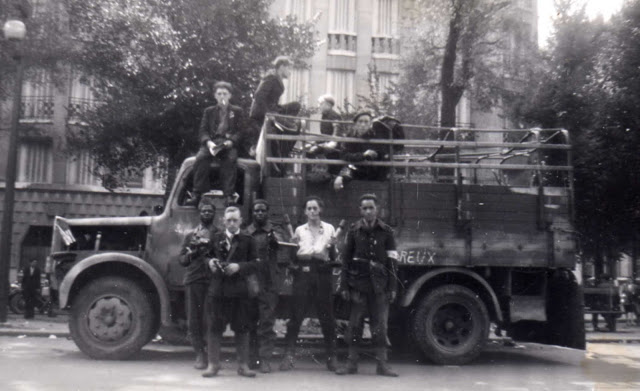 Within the British special operations community, there was a feeling that the higher-level commanders, particularly Montgomery, failed to appreciate the possible uses of the SOF. It remains difficult, however, to find a US Army commander who had a firm grasp of those potentialities. One searches in vain through the published Patton Papers for a reference to the SOF, finally discovering a transcript of a September 7, 1944, press conference where a correspondent asked how much support he had received from the FFI. Patton responded: better than expected and less than advertised.
Within the British special operations community, there was a feeling that the higher-level commanders, particularly Montgomery, failed to appreciate the possible uses of the SOF. It remains difficult, however, to find a US Army commander who had a firm grasp of those potentialities. One searches in vain through the published Patton Papers for a reference to the SOF, finally discovering a transcript of a September 7, 1944, press conference where a correspondent asked how much support he had received from the FFI. Patton responded: better than expected and less than advertised.
 In his diary, however, on September 2 1944, he observed: Gen Donovan was in camp when I got back and was most complimentary. While I think the efforts of his cohorts (office of strategic services) are futile, I personally like and admire him a lot. I will now get set for the next move. This is not meant to single out Gen Patton as one of the generals who stubbornly opposed the use of the SOF. To the contrary, he proved one of the commanders open to new ideas. He, in fact, used the FFI and the SOF teams from the SFHQ to a greater extent than his colleagues. Nonetheless, he disapproved of them.
In his diary, however, on September 2 1944, he observed: Gen Donovan was in camp when I got back and was most complimentary. While I think the efforts of his cohorts (office of strategic services) are futile, I personally like and admire him a lot. I will now get set for the next move. This is not meant to single out Gen Patton as one of the generals who stubbornly opposed the use of the SOF. To the contrary, he proved one of the commanders open to new ideas. He, in fact, used the FFI and the SOF teams from the SFHQ to a greater extent than his colleagues. Nonetheless, he disapproved of them.
If even the bold and imaginative commanders disapproved of operations in the enemy’s rear, what chance did such operations have in SHAEF’s future? The answer to that question was not long in coming; SHAEF began to disassemble the Special Force Detachments during the first week of September 1944, and by the end of the year, most of the Jedburghs and a large number of other Special Operation Force personnel had been transferred to Asia. SHAEF justified its decision by observing that there was no prospect for successful guerrilla warfare in Germany. That was no doubt a correct assessment, but one also senses a certain relief, as if unwanted house guests had finally departed. One is left finally with the impression that the concept of Jedburgh operations was ahead of its time. The requirements for radios, modified aircraft, and other specialized equipment and weapons pushed the limits of 1943-44 technology and were not entirely reliable. In the realm of organization, this concept was relatively new and of necessity grew out of the SOE’s experiences in intelligence gathering. Indeed, one of the most instructive examples from these operations was the use of intelligence-gathering networks that provided guides and security for the insertion of the Jedburgh teams (what is known in today’s Special Forces lexicon as ‘area assessment’ or ‘pilot’ teams).
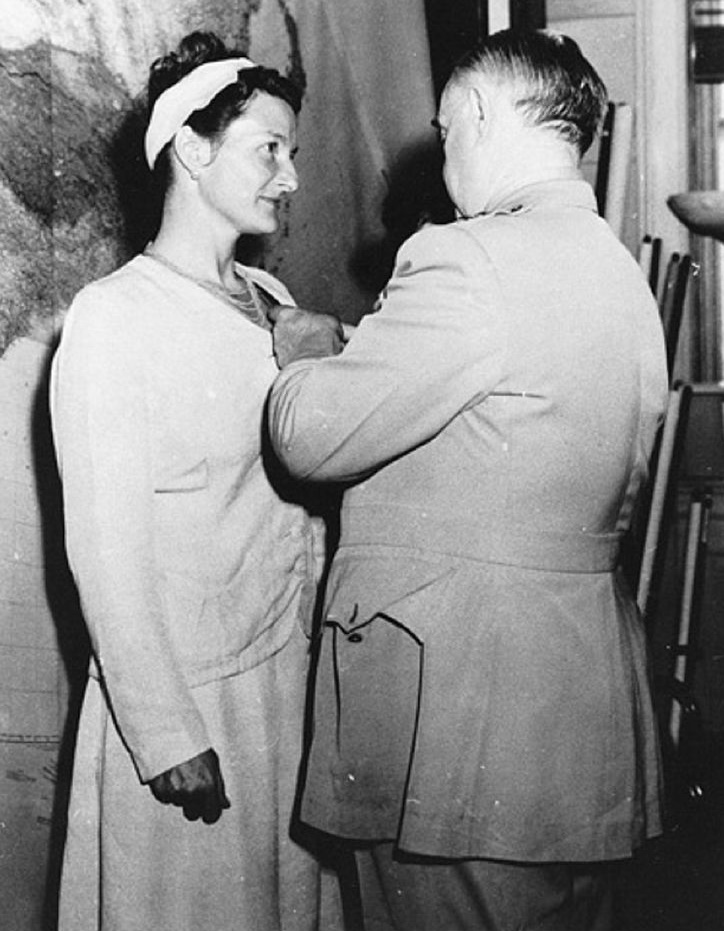 That the SFHQ organization proved deficient in a number of areas (i.e., failure to develop networks in eastern France, late deployment of Jedburgh teams, and inability to rapidly resupply teams in the field) should not have came as a surprise since such a major undertaking had not been tried before. Furthermore, the inability of senior ground commanders to appreciate the value of the SOF and operations in the enemy’s rear must also be placed within the historical context. For the generals of World War II-educated in the military schools of the 1929s and 1930s-guerrilla warfare tended to be an alien concept. One of the most important lessons to be learned from these operations is that senior ground force commanders and their staffs must be fully educated in the SOF capabilities and limitations.
That the SFHQ organization proved deficient in a number of areas (i.e., failure to develop networks in eastern France, late deployment of Jedburgh teams, and inability to rapidly resupply teams in the field) should not have came as a surprise since such a major undertaking had not been tried before. Furthermore, the inability of senior ground commanders to appreciate the value of the SOF and operations in the enemy’s rear must also be placed within the historical context. For the generals of World War II-educated in the military schools of the 1929s and 1930s-guerrilla warfare tended to be an alien concept. One of the most important lessons to be learned from these operations is that senior ground force commanders and their staffs must be fully educated in the SOF capabilities and limitations.
It remains difficult to assess the effectiveness of the eleven Jedburgh teams dropped in front of the 12-AG in August 1944. Like the other teams dropped to the south, they provided organization, tactical expertise, and training to the FFI volunteers. Upon linkup with advancing Allied ground forces, they also provided well-documented assistance.
The teams were designed, however, to work behind enemy lines, and it is on that basis that their performance must be evaluated. Viewed dispassionately, one must conclude that the operations of these eleven teams in northeastern France were only marginally successful. Their major contributions were indirect and defy quantification: their psychological effect upon occupied France and the German occupation force and their role in providing intelligence data, both to the SFHQ by radio and by sending guides to meet the advancing Allied ground forces.
That the teams could have been much more effective certainly was not the fault of the individual Jedburghs, who proved tough, resourceful, skilled, and highly motivated. It was not the job of these teams to single-handedly defeat the German Army in the west, and in any case, three-man teams were absurdly small. In the event of even one casualty, operations became extremely difficult if not impossible. If the Jedburghs may be faulted for anything, it is perhaps that they were too willing to enter into combat.
It would be altogether too easy to describe the shortcomings of these operations as the result of an institutional failure, but there was no SOF institution per se to blame. The SOE and the OSS were brand new organizations inventing the scope, direction, organization, and methods of the SOF operations. The SOE and the OSS were so new and insecure that they were both abolished in 1946 and 1966 therefore do not actually qualify as institutions.
Upon reflection, it appears remarkable that the SFHQ achieved as much as it did. One of the more important successes of the Jedburgh operations was the psychological impact the teams had on the citizens of occupied France. Following years of occupation, the sight of uniformed Allied soldiers behind the lines was a harbinger of liberation and a call to action. As these Jedburgh team operations have demonstrated, that call did not go unanswered. The ultimate triumph of the Jedburgh project, however, was in the successful formation of teams of professional and nonprofessional soldiers from different nations who worked together toward a common goal. To make an accurate and fair evaluation of Jedburgh operations, it remains clear that more study is required, not only of Jedburgh activities in other parts of France but also their subsequent operations in China and Southeast Asia.



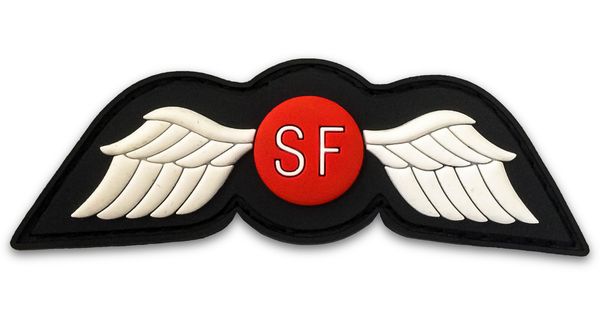
 Conclusions
Conclusions
